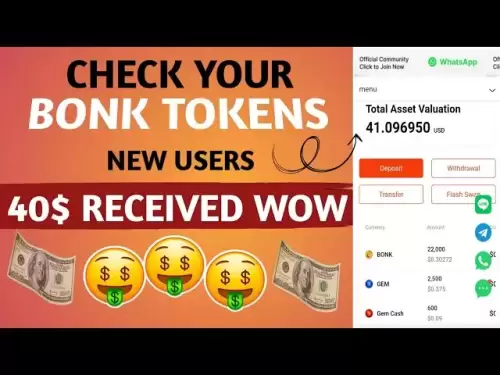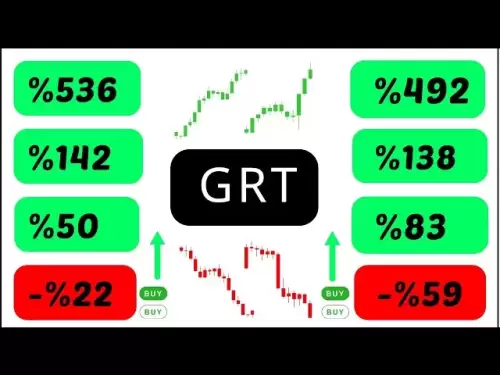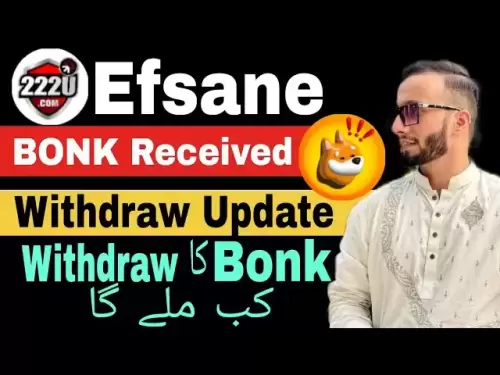-
 Bitcoin
Bitcoin $107,467.9126
1.26% -
 Ethereum
Ethereum $2,447.5288
-0.12% -
 Tether USDt
Tether USDt $1.0005
0.00% -
 XRP
XRP $2.1921
0.13% -
 BNB
BNB $647.2897
0.50% -
 Solana
Solana $144.8627
-0.37% -
 USDC
USDC $0.9996
-0.03% -
 TRON
TRON $0.2732
0.10% -
 Dogecoin
Dogecoin $0.1652
-0.18% -
 Cardano
Cardano $0.5700
-2.87% -
 Hyperliquid
Hyperliquid $37.0274
-1.81% -
 Bitcoin Cash
Bitcoin Cash $484.6957
0.19% -
 Sui
Sui $2.7354
-2.19% -
 Chainlink
Chainlink $13.1727
-1.49% -
 UNUS SED LEO
UNUS SED LEO $8.9978
-0.04% -
 Stellar
Stellar $0.2421
-2.33% -
 Avalanche
Avalanche $17.5633
-3.51% -
 Toncoin
Toncoin $2.8476
-1.94% -
 Shiba Inu
Shiba Inu $0.0...01166
-0.56% -
 Litecoin
Litecoin $85.1071
0.09% -
 Hedera
Hedera $0.1502
-2.96% -
 Monero
Monero $310.2774
-1.64% -
 Dai
Dai $0.9999
-0.01% -
 Polkadot
Polkadot $3.3584
-1.88% -
 Ethena USDe
Ethena USDe $1.0003
-0.04% -
 Bitget Token
Bitget Token $4.4443
2.90% -
 Pi
Pi $0.6242
14.04% -
 Uniswap
Uniswap $6.9774
-2.86% -
 Pepe
Pepe $0.0...09535
-5.05% -
 Aave
Aave $256.7574
-3.35%
Why does Trust Wallet transfer fail? Analysis of common error causes
Trust Wallet transfer failures can be caused by network congestion, insufficient funds, incorrect addresses, smart contract issues, wallet configuration errors, or internet connectivity problems.
May 19, 2025 at 07:49 am
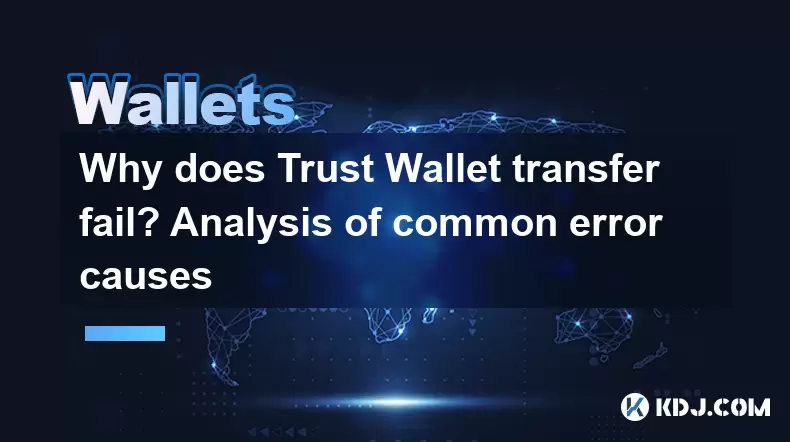
Trust Wallet is a popular mobile cryptocurrency wallet that allows users to manage a wide range of digital assets. However, users may occasionally encounter transfer failures when attempting to send or receive cryptocurrencies. Understanding the common causes of these failures can help users troubleshoot and resolve issues more effectively. This article will delve into the various reasons why Trust Wallet transfers might fail and provide detailed explanations for each.
Network Congestion
One of the most common reasons for transfer failures in Trust Wallet is network congestion. When a blockchain network experiences high traffic, transactions can take longer to process or may fail altogether. This is particularly common on networks like Ethereum, where gas fees and transaction volumes can fluctuate significantly.
To check if network congestion is the cause of your transfer failure, you can visit blockchain explorers like Etherscan for Ethereum or BscScan for Binance Smart Chain. These platforms provide real-time data on network activity and can help you determine if the network is currently experiencing high congestion.
If network congestion is the issue, you may need to wait for the network to clear up before attempting the transfer again. Alternatively, you can try adjusting the gas fee to a higher amount to prioritize your transaction, though this will increase the cost.
Insufficient Funds or Gas Fees
Another frequent cause of transfer failures is insufficient funds or gas fees. When sending cryptocurrencies, you need to ensure that your wallet has enough balance to cover both the amount you are sending and the transaction fees required by the network.
For example, if you are sending Ethereum, you need to have enough ETH to cover the gas fee. If your wallet balance is too low to cover these costs, the transaction will fail. To resolve this, you can either add more funds to your wallet or reduce the amount you are trying to send.
To check your wallet balance and ensure you have enough funds, follow these steps:
- Open Trust Wallet and navigate to the wallet containing the cryptocurrency you want to send.
- Check the balance displayed on the screen.
- If the balance is insufficient, you can receive more funds by sharing your wallet address with the sender.
Incorrect Recipient Address
Sending funds to an incorrect recipient address is another common reason for transfer failures. Cryptocurrency transactions are irreversible, so it's crucial to double-check the recipient's address before confirming the transfer.
To avoid this issue, always verify the recipient's address carefully. You can do this by copying and pasting the address directly from the recipient's wallet or by using a QR code if available. Trust Wallet also allows you to scan QR codes directly from the app, which can help reduce the risk of errors.
If you realize you've entered the wrong address after initiating the transaction but before it has been confirmed on the blockchain, you may be able to cancel the transaction if your wallet supports this feature. However, once the transaction is confirmed, it cannot be reversed.
Smart Contract Issues
When dealing with tokens on platforms like Ethereum or Binance Smart Chain, smart contract issues can also lead to transfer failures. Smart contracts are self-executing programs that run on the blockchain, and if there is a problem with the contract code, it can prevent transactions from being processed correctly.
To identify if a smart contract issue is causing your transfer failure, you can check the token's contract address on a blockchain explorer. Look for any error messages or warnings associated with the contract. If you find issues, you may need to wait for the token's developers to resolve them before attempting the transfer again.
Wallet Configuration Errors
Wallet configuration errors can also cause transfer failures. This can include issues with the wallet's settings, such as incorrect network selection or outdated software.
To ensure your wallet is properly configured, follow these steps:
- Open Trust Wallet and go to the settings menu.
- Check that you have selected the correct network for the cryptocurrency you are trying to send. For example, if you are sending an ERC-20 token, make sure you are on the Ethereum network.
- Ensure that your app is up to date by checking for any available updates in your device's app store.
If you find any configuration errors, correct them and try the transfer again.
Internet Connectivity Problems
Finally, internet connectivity problems can also lead to transfer failures. If your device loses its internet connection during the transaction process, the transfer may fail.
To ensure a stable internet connection, try the following:
- Check your Wi-Fi or mobile data connection to ensure it is working properly.
- If possible, switch to a different network or use a mobile hotspot to see if the issue persists.
- Avoid using public Wi-Fi networks, as they can be less reliable.
Once you have a stable connection, attempt the transfer again.
Frequently Asked Questions
Q: Can I recover funds sent to the wrong address?
A: Unfortunately, once a cryptocurrency transaction is confirmed on the blockchain, it cannot be reversed. If you have sent funds to the wrong address, you will need to contact the recipient directly to request a refund. However, there is no guarantee that they will return the funds.
Q: How can I check the status of a pending transaction?
A: To check the status of a pending transaction, you can use a blockchain explorer like Etherscan or BscScan. Enter the transaction hash (TXID) provided by Trust Wallet into the explorer's search bar, and it will show you the current status of the transaction.
Q: Is there a way to speed up a slow transaction?
A: If your transaction is taking a long time to process due to network congestion, you can try speeding it up by increasing the gas fee. In Trust Wallet, you can do this by canceling the original transaction and resubmitting it with a higher gas fee. However, this will increase the cost of the transaction.
Q: What should I do if my wallet is still not working after trying all the solutions?
A: If you have tried all the solutions mentioned and your wallet is still not working, you may need to reach out to Trust Wallet's customer support for further assistance. They can help diagnose any underlying issues and provide additional guidance on resolving them.
Disclaimer:info@kdj.com
The information provided is not trading advice. kdj.com does not assume any responsibility for any investments made based on the information provided in this article. Cryptocurrencies are highly volatile and it is highly recommended that you invest with caution after thorough research!
If you believe that the content used on this website infringes your copyright, please contact us immediately (info@kdj.com) and we will delete it promptly.
- Meme Coins, Crypto Influencers, and Investment: Riding the Wave in 2025
- 2025-06-26 10:25:13
- NoviqTech, HYDI, and Carbon Credits: A Partnership Driving Sustainable Solutions
- 2025-06-26 10:25:13
- Solana ETF Race Heats Up: Invesco Galaxy Joins the Fray
- 2025-06-26 10:40:13
- XRP, Bitcoin, Ethereum: Navigating the Crypto Crossroads in 2025
- 2025-06-26 10:40:13
- Pi Coin Price Prediction: June 26 - Will It Break $0.70?
- 2025-06-26 09:05:13
- Tokenization Takes Flight: Cross-Border Transactions Soar to New Heights
- 2025-06-26 08:30:12
Related knowledge
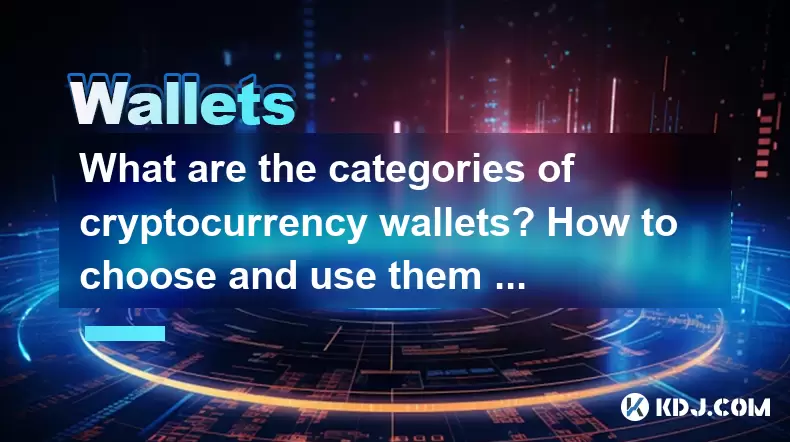
What are the categories of cryptocurrency wallets? How to choose and use them safely?
Jun 21,2025 at 10:42pm
Understanding Cryptocurrency WalletsCryptocurrency wallets are essential tools for anyone involved in the digital asset ecosystem. They allow users to store, send, and receive cryptocurrencies securely. Unlike traditional wallets that hold physical money, crypto wallets manage cryptographic keys—private and public—which interact with blockchain networks...
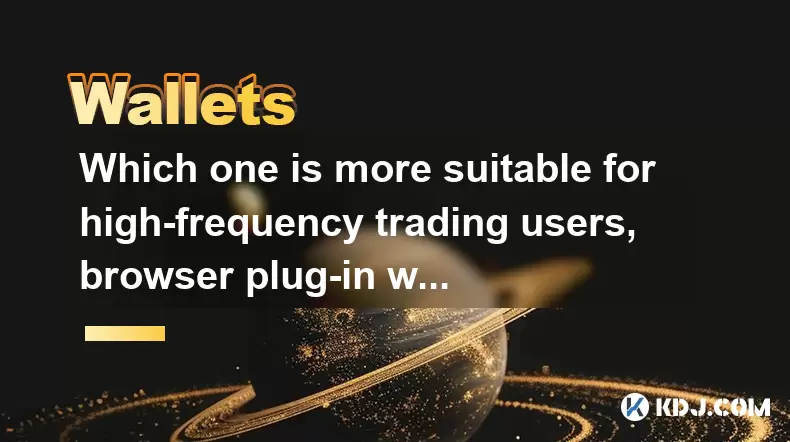
Which one is more suitable for high-frequency trading users, browser plug-in wallets or independent application wallets?
Jun 23,2025 at 08:22am
Understanding the Role of Wallets in High-Frequency TradingFor high-frequency trading (HFT) users in the cryptocurrency market, wallet selection is critical due to the need for speed, security, and seamless integration with trading platforms. HFT involves executing a large number of trades within seconds or even milliseconds, which demands a wallet that...

What are the differences between the operating mechanisms of on-chain wallets and off-chain wallets? Is there a big difference in transaction fees?
Jun 25,2025 at 08:49am
Understanding On-Chain WalletsOn-chain wallets are digital wallets that directly interact with the blockchain network. These wallets store users' private keys, which are essential for signing and authorizing transactions on the blockchain. When using an on-chain wallet, every transaction must be recorded and verified by the decentralized nodes in the ne...
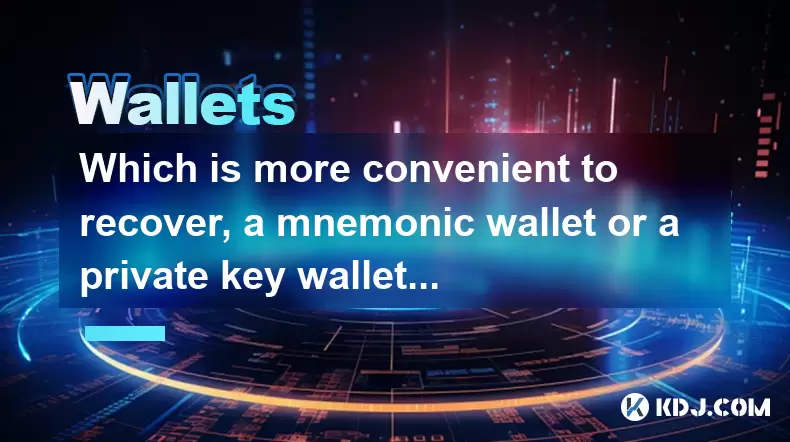
Which is more convenient to recover, a mnemonic wallet or a private key wallet? Will security be compromised?
Jun 20,2025 at 06:36am
Understanding Mnemonic Wallets and Private Key WalletsIn the world of cryptocurrency, wallet recovery is a crucial aspect that users must understand before storing digital assets. Two popular methods for securing and recovering wallets are mnemonic phrases and private keys. Both serve as gateways to access funds, but they differ significantly in terms o...
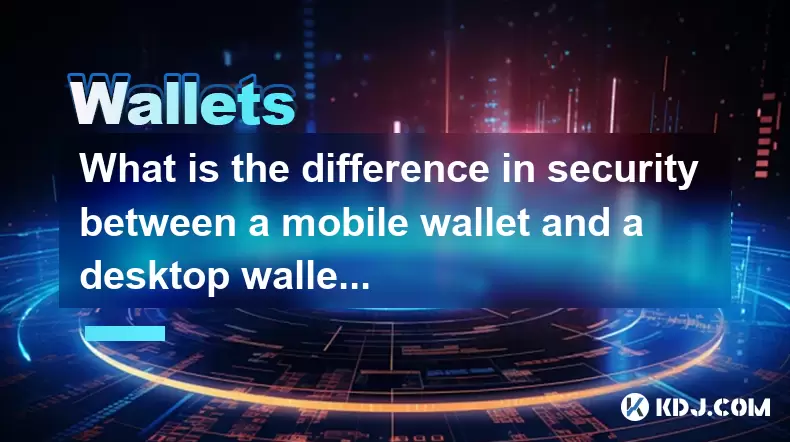
What is the difference in security between a mobile wallet and a desktop wallet?
Jun 22,2025 at 12:35pm
Understanding the Security Aspects of Mobile WalletsMobile wallets are digital wallets designed to run on smartphones, allowing users to store, send, and receive cryptocurrencies conveniently. The security of mobile wallets largely depends on how well the device is protected from malware, phishing attacks, and unauthorized access. One key feature of mob...
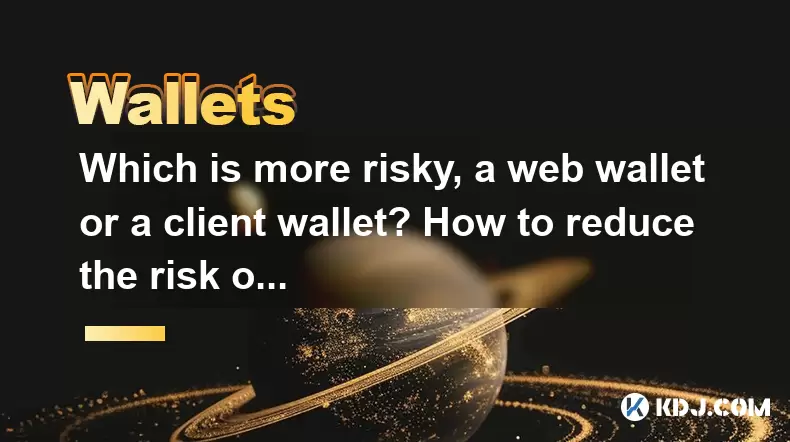
Which is more risky, a web wallet or a client wallet? How to reduce the risk of use?
Jun 22,2025 at 09:21pm
Understanding Web Wallets and Client WalletsWhen managing cryptocurrencies, choosing the right type of wallet is crucial. Web wallets and client wallets are two popular options among users, each with its own set of advantages and disadvantages. A web wallet operates through a browser interface and is usually hosted online by third-party services. This m...

What are the categories of cryptocurrency wallets? How to choose and use them safely?
Jun 21,2025 at 10:42pm
Understanding Cryptocurrency WalletsCryptocurrency wallets are essential tools for anyone involved in the digital asset ecosystem. They allow users to store, send, and receive cryptocurrencies securely. Unlike traditional wallets that hold physical money, crypto wallets manage cryptographic keys—private and public—which interact with blockchain networks...

Which one is more suitable for high-frequency trading users, browser plug-in wallets or independent application wallets?
Jun 23,2025 at 08:22am
Understanding the Role of Wallets in High-Frequency TradingFor high-frequency trading (HFT) users in the cryptocurrency market, wallet selection is critical due to the need for speed, security, and seamless integration with trading platforms. HFT involves executing a large number of trades within seconds or even milliseconds, which demands a wallet that...

What are the differences between the operating mechanisms of on-chain wallets and off-chain wallets? Is there a big difference in transaction fees?
Jun 25,2025 at 08:49am
Understanding On-Chain WalletsOn-chain wallets are digital wallets that directly interact with the blockchain network. These wallets store users' private keys, which are essential for signing and authorizing transactions on the blockchain. When using an on-chain wallet, every transaction must be recorded and verified by the decentralized nodes in the ne...

Which is more convenient to recover, a mnemonic wallet or a private key wallet? Will security be compromised?
Jun 20,2025 at 06:36am
Understanding Mnemonic Wallets and Private Key WalletsIn the world of cryptocurrency, wallet recovery is a crucial aspect that users must understand before storing digital assets. Two popular methods for securing and recovering wallets are mnemonic phrases and private keys. Both serve as gateways to access funds, but they differ significantly in terms o...

What is the difference in security between a mobile wallet and a desktop wallet?
Jun 22,2025 at 12:35pm
Understanding the Security Aspects of Mobile WalletsMobile wallets are digital wallets designed to run on smartphones, allowing users to store, send, and receive cryptocurrencies conveniently. The security of mobile wallets largely depends on how well the device is protected from malware, phishing attacks, and unauthorized access. One key feature of mob...

Which is more risky, a web wallet or a client wallet? How to reduce the risk of use?
Jun 22,2025 at 09:21pm
Understanding Web Wallets and Client WalletsWhen managing cryptocurrencies, choosing the right type of wallet is crucial. Web wallets and client wallets are two popular options among users, each with its own set of advantages and disadvantages. A web wallet operates through a browser interface and is usually hosted online by third-party services. This m...
See all articles
















